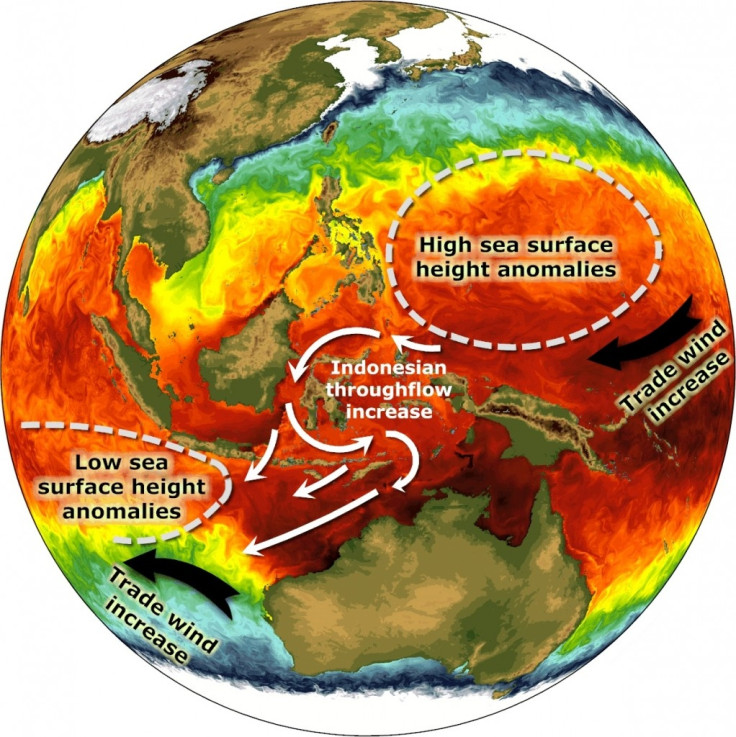Global warming hiatus: Indian Ocean left holding 70% heat absorbed by Pacific thanks to the easterlies

Indian Ocean is the latest culprit indicted in the missing heat conundrum associated with global warming.
A computer modeling study by University of Miami in Florida points to strong easterly trade winds that caused warm water to pile up in the western Pacific and seep into the Indian Ocean, which may now hold more than 70% of the heat absorbed by the upper ocean in the past decade.
Sang-Ki Lee, an oceanographer at the University of Miami in Florida, and his colleagues agreed to their theory in data from World Ocean Atlas (WOA) for the early 2000s.
The explanation also fits with measurements of flow through the largest Indonesian channel — the Makassar Strait — which increased over the same period of time.
The researchers have reported their findings in Nature Geoscience.
It has been suspected for long that oceans have played a crucial role in the so-called warming hiatus by storing heat trapped in the atmosphere.
Pacific Ocean has absorbed a significant amount of this heat. With La Niña-like conditions dominating the region since the turn of the century, wind patterns and ocean currents have increased the draw down of warm surface waters in the subtropics.
When the team first went looking for this heat beneath the surface of the Pacific Ocean, they could not find it. In fact, US National Oceanic and Atmospheric Administration's (NOAA) and WOA data suggest that the upper 700 metres of the Pacific have actually cooled in recent years.
The conclusion from the computer modeling strengthens the role played by the Pacific in the hiatus.
Gerald Meehl, a climate scientist at the US National Center for Atmospheric Research (NCAR) in Boulder, Colorado says that Lee's team has analysed trends in upper 700 metres of the ocean while most research points to a deeper drawdown of heat.
Critics also note that the results disagree with studies using alternatives to the WOA data, which they claim has large observational gaps.
Kevin Trenberth, also a climate scientist at NCAR found pronounced Pacific warming during the hiatus but only modest warming in the Indian Ocean from satellite data.
The pause in warming
Global surface temperatures between 1998 and 2013 indicate a slowdown in global warming, causing skeptics to claim climate change was a hoax.
However, many studies have been done that show this pause in global warming is a result of a combination of natural phenomena ranging from volcanoes to ocean absorption, rather than a drop of emissions.
A University of Washington study claimed that the Atlantic ocean was drawing down heat by nearly a mile, while a ETH Zurich one citing climate fluctuations like El Nino and weak solar irradiance.
The ETH study used climate data taken between 1997 and 2012 and looked at corresponding El Nino and La Nina occurrences to conclude that global warming would continue once these natural fluctuations settle down.
For now the ball has passed to the Indian Ocean.

© Copyright IBTimes 2024. All rights reserved.





